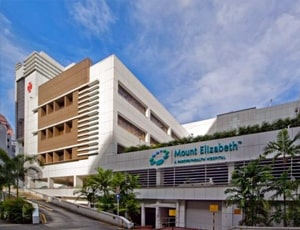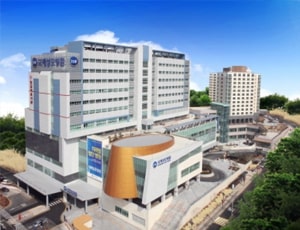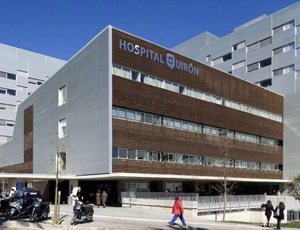Coronary artery bypass grafting (CABG) is a type of an open heart surgery that intends to improve the flow of blood to the heart. It involves the placement of a coronary artery bypass graft, which is retrieved from a healthy artery in the body, and placed in the position of the blocked portion of the artery that supplies blood to the heart. CABG surgery is a complex, yet common procedure.
A waxy substance called plaque may deposit in good amount in the coronary arteries of the heart over a period of time. As time advances, the plaque starts hardening and eventually ruptures and breaks open. The plaque interferes with blood flow as arteries grow narrow at the affected region. A blood clot develops when the plaque ruptures. The artery may get blocked completely is the size of the clot is big enough to stop the flow of blood to the heart. This may eventually lead to serious events such as heart attack and also put the individual at the risk of death.
The person may experience chest pain and discomfort when the heart is deprived of rich oxygenated blood This pain is referred to as angina. Breathlessness and fatigue are some of the other problems associated with coronary heart disease.
Coronary artery bypass surgery aims at improving the overall blood circulation to the heart. A part of healthy artery or vein from another part of the body is taken and is grafted or connected to the blocked coronary artery for bypass. This artery or vein goes around the blocked portion of the coronary artery and establishes a new path for the blood to flow to the heart, thus reducing the chance of a heart attack. In a single surgery, surgeons can bypass multiple coronary arteries. Severe blockages can be treated with this procedure.
CABG is conducted when there are one or two blockages in the artery. High risk CABG is conducted when there are multiple blockages in the artery and the blood flow to the heart is severely restricted.
Before the actual procedure you may be required to visit the surgeon multiple times as they perform a number of tests. The surgical team may perform several tests to check for the overall functioning of the heart and other vital organs. The purpose of these tests is to assess you overall capacity to tolerate the surgery. Additionally, it also helps the surgeons decide a surgical approach and the things that they need to take care of during the procedure.
Days before the procedure, you must make your lifestyle as simple as possible and you must avoid exerting yourself. Blood count, clotting time, and catheterization tests are conducted to check the severity of the blocked coronary arteries and to anticipate the complications that may arise as a result of the coronary artery bypass surgery.
There are two approaches to conduct CABG – open heart surgery and laparoscopic bypass heart surgery. The latter is a type of minimally invasive heart bypass surgery, which involves the creation of smaller incisions. This results in minimum discomfort and complications and allows for faster recovery and healing.
Laparoscopic bypass heart surgery is mostly preferred when there is not much blockage in the coronary artery. Open heart surgery, on the other hand, is conducted in complicated cases. High-risk CABG is mostly conducted as an open heart surgical procedure.
Patients are transferred to the ICU right after the surgery and shifted to the patient ward a day later. Heart rhythm disturbances are discovered in 25 percent of the patients within a period of 3 or 4 days after the surgery. They are temporary atrial fibrillations associated with surgical trauma. Such patients respond well to standard medical therapies.
They can be weaned within a period of a month after the surgery. From one week to one day, the range of stay in the hospital may vary from one patient to the other. Young patients are usually discharged within two days. The recovery time can be very long and the range of physical activities must be kept to a minimum.
The bypass surgery cost is much affordable and significantly lower than what it costs in the Western country, especially in the US. It is estimated that a patient from abroad saves thousands of dollar by choosing to undergo CABG and high risk CABG in India instead of any other Western country.
The coronary artery bypass graft cost varies among different countries. The total cardiac bypass surgery cost in India and abroad varies on a number of factors. Some of these factors include the following:
The following tables highlight the approximate high risk coronary artery bypass surgery cost in India and abroad:
| Cost of High Risk CABG surgery in India | $8000 |
| Cost of High Risk CABG surgery in Thailand | $12000 |
| Cost of High Risk CABG surgery in South Korea | $33500 |
| Cost of High Risk CABG surgery in Hungary | $34500 |
| Cost of High Risk CABG surgery in UAE | $21251 |
| Cost of High Risk CABG surgery in Poland | $22100 |
The cost of triple bypass surgery in India is also reasonable price in comparison to other country. The following tables highlight the approximate coronary artery bypass surgery cost in India and abroad:
| Treatment cost in Coronary Artery Bypass Grafting (CABG) Cost in India: | 4200 |
| Treatment cost in Coronary Artery Bypass Grafting (CABG) Cost in Turkey: | 10000 |
| Treatment cost in Coronary Artery Bypass Grafting (CABG) Cost in United Arab Emirates: | 25010 |
| Treatment cost in Coronary Artery Bypass Grafting (CABG) Cost in Spain: | 27000 |
| Treatment cost in Coronary Artery Bypass Grafting (CABG) Cost in Thailand: | 23400 |
| Treatment cost in Coronary Artery Bypass Grafting (CABG) Cost in Israel: | 30000 |
| Treatment cost in Coronary Artery Bypass Grafting (CABG) Cost in Singapore: | 56000 |
| Treatment cost in Coronary Artery Bypass Grafting (CABG) Cost in Tunisia: | 15000 |
| Treatment cost in Coronary Artery Bypass Grafting (CABG) Cost in South Africa: | n/a |
| Treatment cost in Coronary Artery Bypass Grafting (CABG) Cost in Lithuania: | n/a |
| Treatment cost in Coronary Artery Bypass Grafting (CABG) Cost in Saudi Arabia: | n/a |
| Treatment cost in Coronary Artery Bypass Grafting (CABG) Cost in South Korea: | 37000 |
| Treatment cost in Coronary Artery Bypass Grafting (CABG) Cost in Switzerland: | n/a |
| Treatment cost in Coronary Artery Bypass Grafting (CABG) Cost in Czechia: | 15000 |
| Treatment cost in Coronary Artery Bypass Grafting (CABG) Cost in Hungary: | n/a |
| Treatment cost in Coronary Artery Bypass Grafting (CABG) Cost in Malaysia: | 18000 |
| Treatment cost in Coronary Artery Bypass Grafting (CABG) Cost in Morocco: | n/a |
| Treatment cost in Coronary Artery Bypass Grafting (CABG) Cost in Poland: | 6900 |
| Treatment cost in Coronary Artery Bypass Grafting (CABG) Cost in United Kingdom: | n/a |



Singapore, Singapore
Mount Elizabeth Hospital is a multispecialty healthcare facility operated by Parkway Health. The hos...more
![]() Private Driver / Limousine Services
Private Driver / Limousine Services
![]() International Cuisine
International Cuisine
![]() Phone in Room
Phone in Room
![]() Online Doctor Consultation
Online Doctor Consultation

Seoul, South Korea
Catholic kwandong university international St Mary hospital is one of its kind hospitals in Korea. I...more
![]() TV in room
TV in room
![]() Phone in Room
Phone in Room
![]() Health Insurance Coordination
Health Insurance Coordination
![]() Mobility Accessible Rooms
Mobility Accessible Rooms

Barcelona, Spain
Quironsalud Barcelona Hospital is built at a very convenient location in Barcelona. The hospital is ...more
![]() Airport Transfer
Airport Transfer
![]() Choice of Meals
Choice of Meals
![]() Interpreter
Interpreter
![]() SIM
SIM

Cardiac Surgeon
Delhi, India
23 Years of experience
USD 32 for video consultation

Cardiothoracic and Vascular Surgeon
Faridabad, India
18 of experience
USD 48 for video consultation

Cardiac Surgeon
Kolkata, India
5 of experience
USD 36 for video consultation

Cardio Thoracic & Vascular Surgeon
Delhi, India
27 Years of experience
USD 42 for video consultation
Q. What is the average cost of heart bypass surgery?
A. Average heart bypass surgery cost varies from one country to the other and depends on several factors, including the number of blockages cleared and the total duration of hospital stay.
Q. Is heart bypass surgery cost covered under health insurance?
A. Yes, a majority of health insurances cover CABG surgery. The best is to check with your insurance provider about the claim.
Q. Is it possible to develop another blockage after having CABG?
A. Blockage can return back after a long period of time. Chances cannot be ruled out.
Q. How much should I rest after CABG surgery?
A. It is important to abstain from sexual intercourse for at least four to six week after the surgery. In addition, you can begin with light physical exercises and normal work routine after six weeks. Make sure to consult your doctor before you begin doing anything that may strain you.